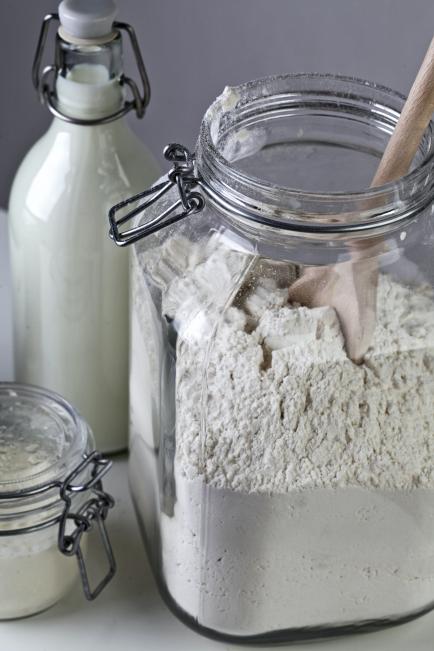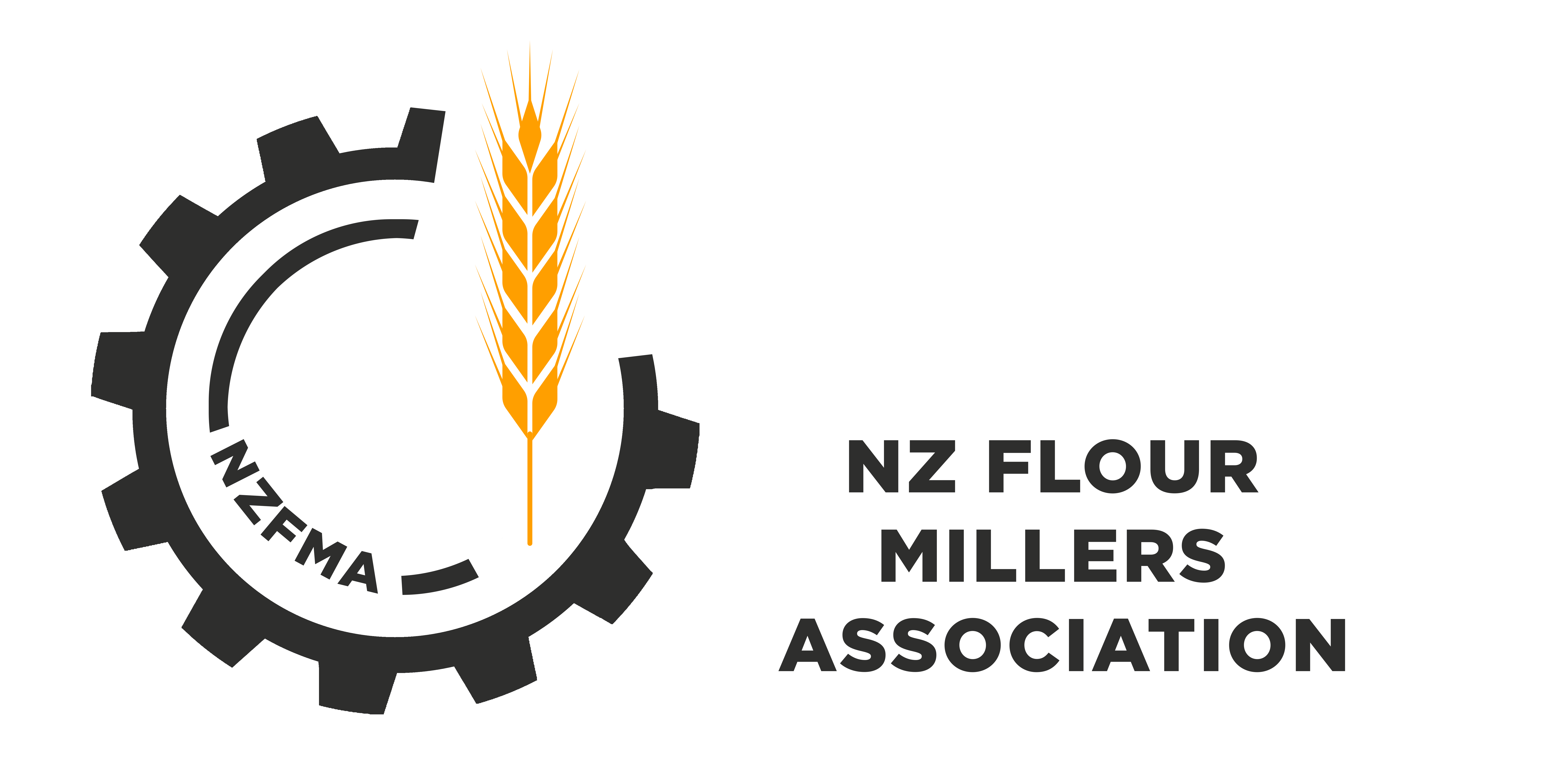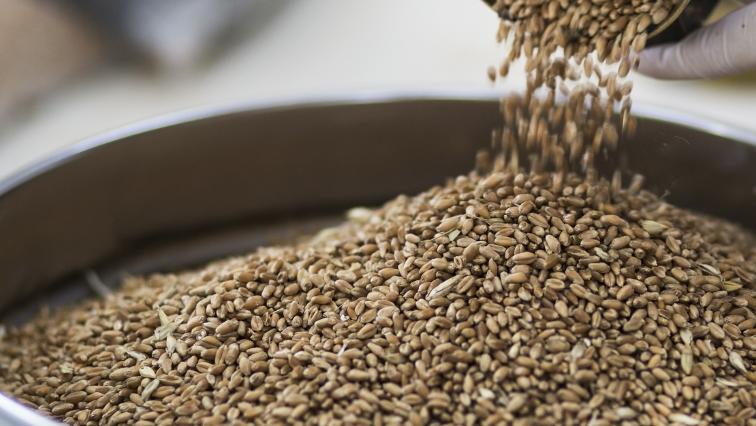Flour, whether white or wholemeal, supplies a large proportion of the nutrients required by our bodies to ensure growth and health.
Flour is used as the basis for many cereal food products including bread, pasta, pastries, cakes and biscuits. Flour is also used as an ingredient, and component in sauces.
Flour plays an important role in supplying nutrients to our diets as our breakfast, lunch, and dinner all contain foods that include flour in some format.
Flour is an excellent source of protein, vitamins, fibre and complex carbohydrates. Flour is also low in fat.
The table below shows the nutritional analyses from different flour samples from New Zealand flour mills:
| Per 100g |
White, Wheat |
White, Wheat, High grade |
Wheat, White, Strong |
Wheat, Wholemeal |
Semolina |
Pastry |
|---|---|---|---|---|---|---|
| Protein (g) | 9.1 | 10.9 | 12.0 | 12.1 | 10.7 | 10.6 |
| Dietary fibre (g) | 2.7 | 3.5 | 3.5 | 11.2 | 3.2 | 3.8 |
| Calcium (mg) | 24.0 | 21.0 | 20.0 | 42.0 | 18.0 | 19.0 |
| Iron (mg) | 2.0 | 2.2 | 2.15 | 4.10 | 1.00 | 0.92 |
| Potassium (mg) | 160.0 | 160.0 | 135.0 | 370.0 | 170.0 | 140.0 |
| Thiamin B1 (mg) | 0.19 | 0.24 | 0.24 | 0.28 | 0.10 | 0.10 |
| Riboflavin B2 (mg) | 0.02 | 0.06 | 0.04 | 0.06 | 0.30 | 0.04 |
| Niacin B3 (mg) | 2.36 | 3.08 | 3.10 | 4.02 | 2.93 | 2.60 |
| Pyridoxine B6 (mg) | 0.06 | 0.05 | 0.06 | 0.11 | 0.15 | 0.15 |
The nutrient content of flour is determined by the extraction rate which is the amount of flour removed from the grain. White flour is usually extracted so that 78% of the grain remains in the flour meaning it contains a lower proportion of some nutrients than wholemeal flour which has a 100% extraction rate.
For wholemeal flour the bran and germ layers are kept during milling while these are removed for white flour. The wheat germ is a very good source of B vitamins and extremely rich in iron, zinc, manganese and copper. It is also the richest plant source of vitamin E. Wheat bran is the richest known source of dietary fibre and contains minerals (such as manganese and iron) and vitamins (niacin, vitamin B6).
When you compare white flour and wholemeal flour in the table above you will have noticed that wholemeal flour contains on average 3.6 times the quantity of fibre contained in white flour. Although white flour is still a good general source of dietary fibre. In plants dietary fibre is a mixture of different components that give a rigid structure to plant cell walls. When fibre is eaten it helps food pass through our digestion system more easily and has been shown to reduce the effects of some common ailments such as constipation and other similar problems.
It is also an excellent source of other essential nutrients, including carbohydrates, amino acids, magnesium, manganese, phosphorus, potassium, sodium, sulphur, zinc, selenium and lipids.
All flour is nutritious, so no matter which type you use it will contribute towards a healthy diet

The B vitamins present in flour include:
- Thiamin (B1) helps break down carbohydrates into sugars to produce energy.
- Riboflavin (B2) is needed for the production of energy in the body.
- Niacin (B3) is essential for making use of the energy produced in all cells.
- Pyridoxine (B6) plays a key role protein, fat and carbohydrate metabolism and the creation of red blood cells and neurotransmitters.
These vitamins need to be supplied by our diet and must be consumed regularly as they are not stored in our bodies.
There are also a range of Minerals present in flour that have unique roles to play in our health:
- Calcium is an essential mineral for bone production and maintenance of healthy bones and teeth. New Zealanders are actively encouraged to maintain a reasonable level of calcium intake throughout life.
- Iron is also an essential mineral. It assists with the transport of oxygen to the cells where it is used. It is part of a pigment called haemoglobin in the red blood cells.
- Potassium is contained inside the cells of our bodies. It enables cells to have the correct fluid mixture they need to work properly.


